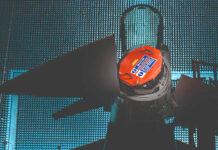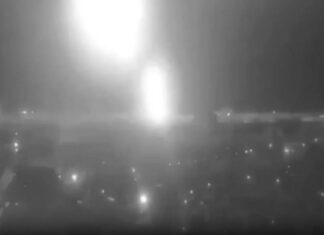An experiment designed to study the dynamics of tethered spacecraft formation, will help maturing space tether technology that promises supporting formations of many pico-satellites forming large synthetic aperture radar systems for high resolution earth observation. These same tethers can also establish ‘space elevators’, lifting payloads from low-earth-orbits to higher orbits as well as de-orbiting expired spacecraft to minimize ‘space junk’.
The promise of tethers in space revolves around their potential to provide lower cost alternatives for propulsion and power. Momentum-Exchange tethers can be used to provide space propulsion without consuming propellant by slinging a payload from low earth orbit to a higher orbit. Conductive space tethers can generate electrical power or produce thrust forces through interactions with the Earth’s magnetic field to change orbits, or de-orbiting a spacecraft after its mission to minimize space junk. Tether systems can also enable groups of satellites to fly in formation for applications like long- baseline interferometry for detection of planets around other suns, or the creation of large synthetic aperture radar systems in space for Earth observation. In addition, high-voltage electrostatic tethers may enable remediation of the Earth’s radiation belts. The data to be collected by the picosatellite crawling up and down the TUI tether will result in key survivability projections for these future tether projects.
The “Multi-Application Survivable Tether” (MAST) is scheduled to be launched into Low-Earth-Orbit (LEO) April 17th, 2007 launched on a Russian launcher from Kazakhstan. The experiment consists of three GPS receiver-equipped picosatellites stacked for launch into a volume about the size of a loaf of bread. Once in orbit, two of the satellites will separate and deploy a 1,000 meter long version of the Tethers Unlimited Inc’s patented Hoytether structure. A third picosatellite, dubbed “Gadget,” will then crawl slowly along the tether’s length, recording and transmitting images of the tether to enable detection of any damage to the tether. The MAST picosatellites were developed by TUI in collaboration with Stanford University.
TUI hopes to prove the survivability of their newest generation of multi- strand tether technology in orbit where it will be exposed to impacts by micrometeoroids, orbital debris, and erosion by atomic oxygen and UV light. Previous tether experiments have had inconsistent lifetimes in the space environment, with the Naval Research Laboratory’s TiPS tether lasting ten years while NASA’s SEDS-2 tether lasted just five days. Over a period of several months, data from the MAST experiment will prove whether TUI’s Hoytether design can enable tethers to operate reliably for long durations in space.
TUI hopes to prove the survivability of their newest generation of multi- strand tether technology in orbit where it will be exposed to impacts by micrometeoroids, orbital debris, and erosion by atomic oxygen and UV light. Previous tether experiments have had inconsistent lifetimes in the space environment, with the Naval Research Laboratory’s TiPS tether lasting ten years while NASA’s SEDS-2 tether lasted just five days. Over a period of several months, data from the MAST experiment will prove whether TUI’s Hoytether design can enable tethers to operate reliably for long durations in space.



















